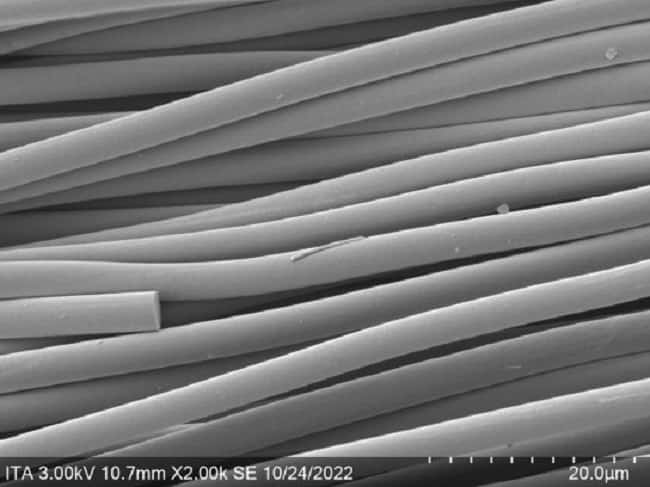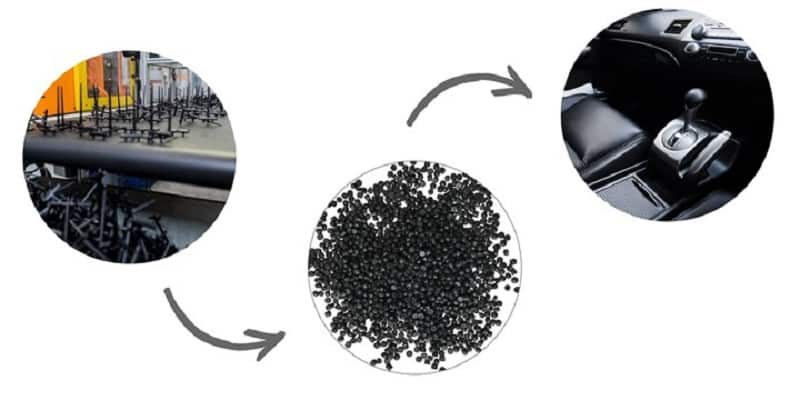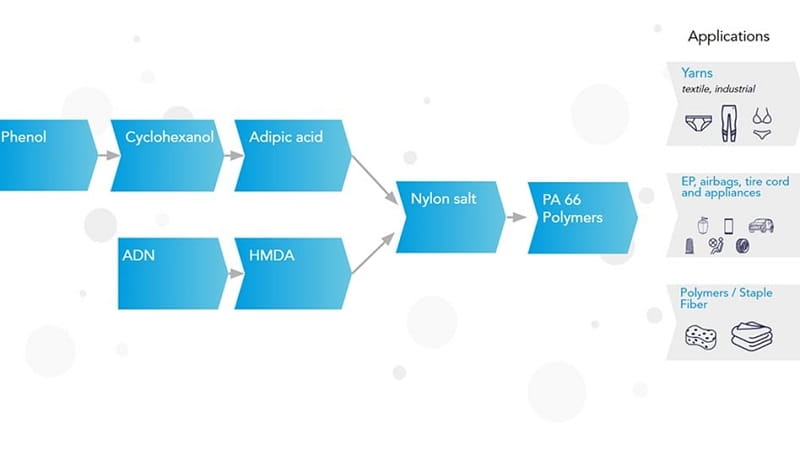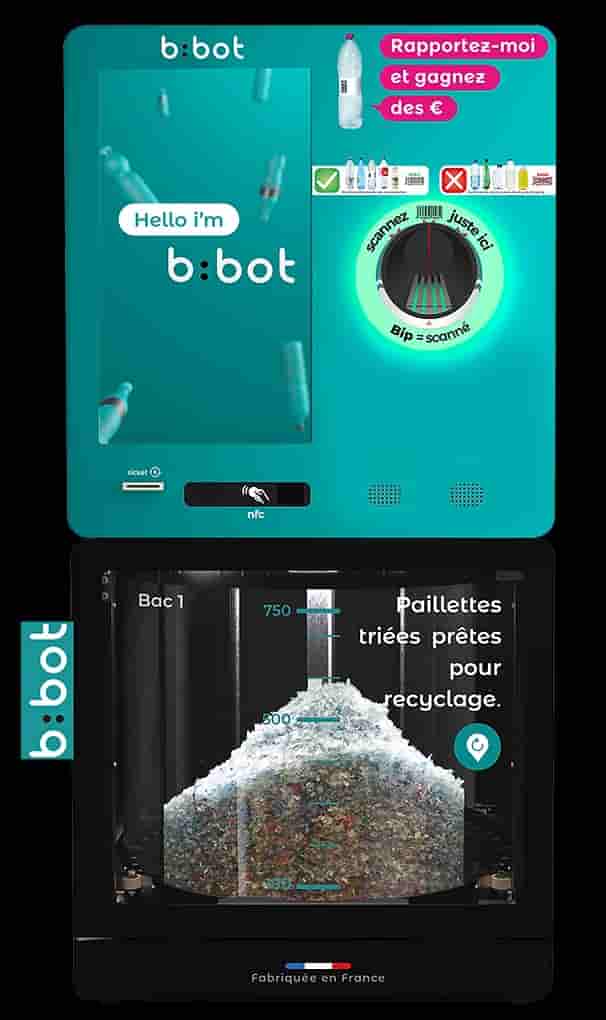Carbon fiber Recycling – How save ocean 15-07-2023 - Arhive
Carbon fiber Recycling
Toray Industries, Inc. has unveiled its plans to expand the production capacity of regular-tow carbon fiber at two of its facilities
These expansions will take place at the Spartanburg plant in South Carolina, USA, operated by Toray Composite Materials America, Inc., and the Gumi plant in Gyeongsangbuk-do, Korea, operated by Toray Advanced Materials Korea Inc. By making significant capital investments, Toray aims to add new production lines and increase its overall capacity by over 20%, reaching 35,000 metric tons per year (m.t./yr) starting in 2025.
The decision to expand these carbon-fiber plants is driven by the growing market demand in the United States and Korea, particularly for pressure vessel applications. This surge in demand is attributed to the ongoing clean energy revolution, encompassing hydrogen, natural gas, and various industrial applications. Carbon fiber Recycling
The expansions will primarily focus on producing high-strength carbon fibers with filament counts of up to 24,000 per tow. Additionally, the increased capacity will also contribute to the overall supply for critical markets such as aviation.
Toray foresees a robust annual growth rate of 17% in the demand for regular tow carbon fiber, fueled by the decarbonization megatrend. This megatrend signifies the increasing need for compressed natural gas delivery vehicles, gas transportation tanks, and other pressure vessel applications. It also anticipates a rise in the utilization of regular tow carbon fiber in fuel cell-powered passenger cars, trucks, trains, and ships. These developments align with Toray’s medium-term management program, Project AP-G 2025, which places great emphasis on sustainable growth. Carbon fiber Recycling
The company has strategically positioned its carbon fiber composite materials business to address climate change effectively. By leveraging its comprehensive capabilities, Toray remains committed to its corporate philosophy of creating new value and contributing to society. Ultimately, the company aims to play a pivotal role in realizing a carbon-neutral economy by 2050.

ITA’s groundbreaking achievement in developing ultra-thin carbon fibers has been recognized with an award
Flávio André Marter Diniz, a graduate of the Institute for Textile Technology (ITA) at RWTH Aachen University in Germany, has successfully created polyethylene (PE) carbon fibers with an unprecedented filament diameter that is two-to-three times smaller than the standard size.
By utilizing PE-based precursors in the production process, the cost of carbon fibers can potentially be reduced by up to 50%. This significant cost reduction holds the promise of expanding the applications of carbon fibers across various industries, including wind power, aerospace, and automotive sectors. Carbon fiber Recycling
For this remarkable accomplishment, Marter Diniz has been honored with the prestigious €5,000 New Materials Hanns Voith Prize from the Hanns Voith Foundation. The award recognizes the immense potential of ITA’s new carbon fibers in revolutionizing the industry.
Lightweight carbon composites have become vital components in growing sectors such as wind turbines and pressure tanks, thanks to their exceptional mechanical properties and low density. However, the high manufacturing costs associated with conventional PAN precursor-based carbon fibers have limited their use in certain applications, and availability has also been a concern. Carbon fiber Recycling
The development of alternative raw materials and manufacturing processes, such as the PE carbon fibers, holds great promise for driving further advancements in industrial composite applications.
During the development of these innovative fibers, the time-consuming sulphonisation process was significantly shortened, resulting in ultra-thin polyethylene-based carbon fibers with a filament diameter of less than 3μm, and without any detectable structural defects. Carbon fiber Recycling
This groundbreaking achievement by ITA not only brings us closer to realizing the potential of carbon fibers in various industries but also showcases the institute’s commitment to pushing the boundaries of technological innovation.

Credit : ITA
Introducing REMOTION®: Revolutionizing Ocean Plastic Pollution with Biodegradability
ADVANSA and Asia Pacific Fibers (APF), affiliated companies committed to environmental responsibility, have joined forces to unveil REMOTION®, a groundbreaking solution to combat ocean plastic pollution while offering the added benefit of biodegradability. REMOTION® represents a premium fiber designed for sports and activewear, crafted from recycled plastic bottles collected from oceanic sources. With full end-to-end traceability ensured by Prevented Ocean Plastic™, REMOTION® pioneers innovative textiles that merge ocean protection with inherent biodegradability. Carbon fiber Recycling
The unique fibers of REMOTION® are engineered to decompose in marine environments, effectively preventing the proliferation of microplastic pollution—a persistent issue arising from the shedding of fibers during laundry wastewater treatment. By addressing this pervasive problem, REMOTION® represents a game-changing solution that combines sustainability and biodegradability, while also offering customized performance features such as built-in anti-bacterial properties and moisture management. Additionally, this premium fiber is available in an array of customer-curated colors, guaranteeing excellent color fastness. As a result, REMOTION® contributes to a sustainable and healthy environment, leading to notable reductions in water consumption, energy usage, chemical reliance, and CO2 emissions. The fiber is offered in filament and staple options, featuring two variants: REMOTION® Blue, made from ocean-bound plastic bottles, and REMOTION® Green, derived from domestically recycled plastic bottles. Carbon fiber Recycling
REMOTION® Blue, a specially engineered polyester fiber, serves as a premium raw material with a profound social impact. ADVANSA and APF collaborate with Prevented Ocean Plastic™, a global recycling initiative that aids tens of thousands of individuals worldwide in cleaning coastlines, preventing ocean plastic pollution, and earning additional income. Plastic collectors retrieve discarded plastic bottles from coastal areas at risk of ocean plastic pollution, delivering them to collection centers. These bottles are then sorted, cleaned, and processed into raw material flakes, which serve as premium ingredients for the REMOTION® Blue product range. Carbon fiber Recycling
Importantly, REMOTION® fibers can be recycled akin to standard polyester at the end of a garment’s useful life. However, where mass apparel recycling is currently unavailable, REMOTION® emerges as a true game changer. In contrast to traditional synthetic fibers that take centuries to decompose, REMOTION® undergoes natural degradation over time, comparable to natural fibers like wool. In a landfill or marine environment, REMOTION® breaks down up to 40% within a year and over 90% within four years, effectively reducing the accumulation of non-biodegradable waste and minimizing the risks associated with plastic and microplastic pollution. Carbon fiber Recycling
Beyond its environmental benefits, REMOTION® fibers are designed for outstanding performance. The fiber’s unique “triple-cross” modified cross-section facilitates faster moisture distribution, ensuring superior breathability and optimal comfort compared to other fabrics. Additionally, REMOTION® offers excellent antibacterial properties achieved through Quat-Silanes, delivering remarkable anti-odor benefits. By inhibiting the growth of harmful microorganisms, REMOTION® provides additional protection against bacteria.
Another notable attribute of REMOTION® is its high color fastness, achieved through the dope dyeing process employed during fiber production. These dope-dyed fibers not only maintain visual appeal over time but also enable other sustainable practices, including reduced water consumption, chemical usage, energy consumption, and lower CO2 emissions among downstream fabric manufacturers, thereby minimizing wastewater pollution. Enhanced durability and longevity are key outcomes of the high color fastness derived from the dope dyeing process. Carbon fiber Recycling
With a rich history of technological expertise and process excellence, ADVANSA and Asia Pacific Fibers proudly launch this exciting product at Performance Days in Munich from October 3rd to 5th, 2023, firmly establishing themselves at the forefront of biodegradability, recyclability, and performance. APF’s plants in Semarang, Indonesia (Polyester Filament), and Karawang, Indonesia (Polyester Staple Fiber) have qualified for the independent Global Recycle Standard (GRS), certifying material traceability as well as social and ethical compliance. Carbon fiber Recycling
The aim of REMOTION® is to actively participate in transforming the textile industry towards a more sustainable and circular economy that prioritizes the well-being of humans, the Earth, and future generations. Through the seamless integration of cutting-edge technology and sustainability, REMOTION® heralds a new era of responsible textile production.
*Note: Biodegradation rates are influenced by factors such as temperature, moisture, surface area, exposure of the final article in the soil, types of microorganisms present, and more. Carbon fiber Recycling
REMOTION® is a registered trademark of ADVANSA.
Innovative requirements could boost circular economy of plastics and critical raw materials in vehicles
New vehicles make up around 10% of plastic demand in the EU and the automotive sector consumes around half of the overall EU use share of some critical raw materials. Innovative policy measures may enhance circular economy of these materials. .
Two new JRC studies present a set of actions that could contribute to making the EU automotive sector more circular. They propose mandatory targets for the use of recycled plastics, as well as measures to increase the recycling and reuse of critical raw materials (CRM) and other materials (e.g. rare earth elements, copper and palladium) in new vehicles. These JRC studies helped shape the new vehicle regulation proposal unveiled today by the European Commission. Carbon fiber Recycling
Can one car’s trash become another car’s treasure?
Ensuring better circularity, sustainability and supply chains resilience of the European automotive sector is crucial for the EU Green Deal and the EU open strategic autonomy. The same goals have been the cornerstone of several car manufacturers’ strategies and roadmaps. However, the numbers show that there is a long way to go to achieve these objectives.
Only 19% of the plastic fractions recovered after shredding of end-of-life vehicles are currently sent to recycling. Moreover, critical raw materials (CRM), such as rare earth elements in electric drive motors or palladium in embedded electronics, are generally not recovered after shredding. Yet new vehicles could use these resources: around 10% of total EU plastic demand and around 9% of EU copper demand are new vehicles entering the market. In addition to this, the automotive industry employs materials derived from more than 60 raw materials. Carbon fiber Recycling
The shift towards electric cars will also bring new challenges: it will increase the need for palladium, used for embedded electronics, as well as for copper and for rare earth elements, used in the permanent magnets (REPM) in most electric drive motors. For instance, the expected new cars’ demand of neodymium and dysprosium (two major materials needed for REPM) are respectively 4025 tonnes and 620 tonnes by 2050, respectively a 10-fold and 7-fold increase compared to 2020 demand (see additional information from the JRC foresight study on strategic technologies and sectors in the EU).
The proposed regulation could improve both plastics and automotive value chains, and prepare the ground for increased circularity of palladium, copper, and rare earth elements from end-of-life vehicles. Carbon fiber Recycling
Developing a market for recycled plastics
At present, less than 10% of recycling facilities across the EU can efficiently sort and recycle plastic fractions coming from end-of-life vehicles. The JRC report on recycled plastic content targets in new vehicles found that promoting the use of recycled plastics in new vehicles and a better end-of-life management for plastics embedded in vehicles could help the car and plastic industries to develop more circular production systems.
Based on this assessment, the European Commission is proposing mandatory recycled content targets for new cars and vans under 3.5 tonnes. This would strengthen the market for recycled plastics and nudge the automotive industry to develop more ambitious recycling practices. Such a policy intervention could cut oil use by up to 4 million barrels in 2030. This measure would be the first of its kind, as similar requirements have never been proposed before for complex industrial products. Carbon fiber Recycling

Solvay’s new polymer has chemical recycling origins
European chemicals firm says it is creating 100 percent recycled-content polyamide from what it calls preconsumer scrap.
Brussels-based Solvay says its new grade of Rhodianyl polymer is made from 100 percent preconsumer-recycled polyamide scrap created at a chemical recycling facility in Brazil.
Solvay can now deliver a high-quality recycled polyamide (PA) 6.6 for the consumer goods and engineering plastic markets, citing a “groundbreaking and rigorously audited chemical recycling process.” Carbon fiber Recycling
The new specialized grade of Rhodianyl is being produced at Solvay’s Santo Andre plant in Brazil, and the company notes it has received SCS Recycled Content Certification.
“With over 70 years of expertise, Solvay has strengthened its position as a leading producer and supplier of high-performance and sustainable PA66 polymers,” says Eduardo Girote, marketing director at Solvay. Carbon fiber Recycling
“Certifying our recycling process is a significant step forward in meeting the stringent standards required by our European customers, who represent the primary market for this application due to the growing demand for recycled raw materials in the industry.”
SCS Global Services performed an audit to verify the traceability of the group’s entire manufacturing process, including scrap management and the depolymerization reaction, which generates the final 100 percent recycled polymer.
“Solvay’s commitment to producing 100 percent preconsumer Recycled Content Certified-polymer makes a positive impact on both the environment and the supply chain,” says Nicole Munoz, vice president at California-based SCS Global Services. “Using recycled content reduces waste, saves energy and gives materials a new life, rather than creating new materials.” Carbon fiber Recycling
Solvay says Rhodianyl can be applied in engineering plastics for the automotive, small appliances and textile markets and says the product launch is part of its ambition to reduce the environmental impact of its polyamide supply chain in Brazil.
That effort also has involved reducing CO2 emissions, biodiversity preservation on and near its campuses and launching a program for recycling polyamide uniforms.

€20 million in funding for reverse vending and shredding b:bot
Incentivising consumer bottle recycling works
The French company Green Big, which styles itself as the ‘start-up revolutionising recycling’, has announced that it has closed out its latest round of funding with €20 million generated among others by Eiffel Investment Group and the group’s long-standing shareholder Crédit Agricole Normandie-Seine Participations. Carbon fiber Recycling
Green Big, launched in 2017, is the creator of the b:bot, a reverse vending machine that not only functions as a reverse vending machine for PET bottles, but also sorts the deposited bottles into a coloured or transparent waste stream before shedding them into PET flakes. Users can actually see the shredded flakes. B:bot displays the number of bottles inserted by the b:bot users along with the corresponding financial incentives. For each accepted bottle, the user accumulates points or cents. At the end, a touch screen allows users to select the desired reward. Carbon fiber Recycling
This might be adding the points to a loyalty card, option choose on the touch screen to save the accumulated points on its loyalty card, print out the receipt or to donate the deposit money to a charity.
The company said its next priorities are to expand the network of installed b:bots, expand into new markets and to develop a solution to recycled cans, as well.
Currently, there are some 500 b:bots installed in France along roadsides, in shopping centres and restaurant areas. Carbon fiber Recycling
The machine uses AI and robotics technology and, claims the company, considerably simplifies the collection and recycling process by eliminating eight recycling steps, considerably reducing the carbon footprint of the process.
“We are proud of Eiffel Essentiel’s arrival as a shareholder in b:bot, as well as the confidence shown in us by Crédit Agricole Nord-Seine Participations through its reinvestment,” said president and founder, Benoit Paget.
He added that the company recently rolled out the machines in Portugal , next to having plans to tackle Tunisia and the United Arab Emirates. Carbon fiber Recycling
“We are delighted to have this opportunity to become shareholders in b:bot and its talented, ambitious and goal-oriented team”, says Romain Ohayon, Managing Director of the Eiffel Essentiel fund. “This investment is a perfect example of Eiffel Essentiel’s strategy to support the growth of future leaders of the energy and ecological transition.

In the polyethylene blister instead of PVC
Constantia Flexibles has introduced a new PE/Al pharmaceutical packaging containing less plastic and easier to recycle. Carbon fiber Recycling
constantia flexibles Regula_CircOnce the undisputed reign of PVC and aluminium, the pharmaceutical blister is experiencing a phase of technological innovation, with the introduction of various polymers, in some cases even in mono-material versions.
In this market segment, Constantia Flexibles has recently introduced Regula Circ, a blister that couples polyethylene to aluminum, replacing the more traditional PVC, as a sealing element to guarantee the barrier properties of the package. Carbon fiber Recycling
According to the packaging manufacturer, in this way the plastic content is reduced and the percentage of aluminum is increased, while at the same time favoring the recyclability of the packaging and the recovery of the various materials during the recycling processes.
Regula Circ integrates into existing pharmaceutical packaging processes: its compatibility with current production lines minimizes the need for further investment or modifications, says Constantia Flexibles. The packaging resists delamination and offers protection against moisture, oxygen and light, safeguarding the integrity and efficacy of pharmaceutical products throughout the supply chain. Carbon fiber Recycling
Alternative blisters have also been presented in recent months by Südpack Medica with PharmaGuard, a single material solution in polypropylene, by Astellas Pharma focusing on biobased PE and by TekniPlex Healthcare with solutions based on polyolfins and polyester. But a mono-material solution entirely in PVC was also presented by Perlen Packaging, awarded last year during the Inovyn Awards 2022 Carbon fiber Recycling

Carbon fiber Recycling
